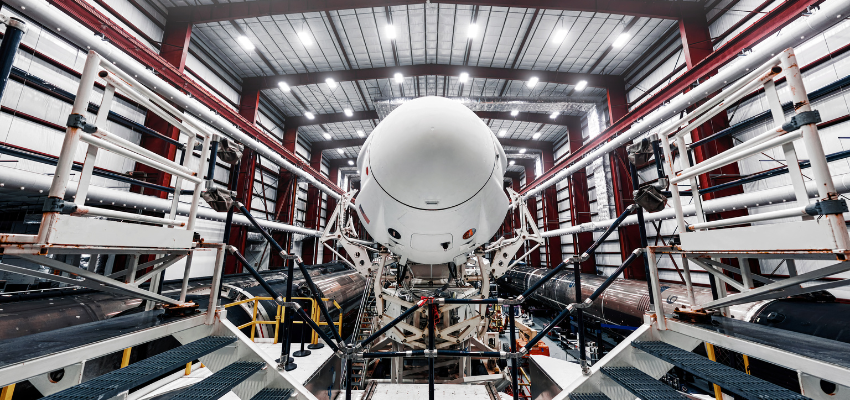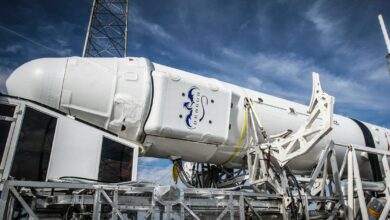Starship Launch: A Step-by-Step Guide

Introduction to Starship Launch
Welcome, space enthusiasts! Are you ready to embark on a thrilling journey through the cosmos? Today, we delve into the mesmerizing world of Starship launch—a marvel of engineering and human ingenuity that has captured the imaginations of stargazers worldwide. In this step-by-step guide, we’ll unlock the secrets behind the development, preparation, and execution of these awe-inspiring missions. Get ready to be transported to new frontiers as we explore everything from historical milestones to potential future applications. So fasten your seatbelts (or rather, spacesuits), as we prepare for an exhilarating adventure through space exploration like never before!
History and Development of Starship
In the grand scheme of space exploration, Starship has emerged as a revolutionary spacecraft that promises to redefine our journey beyond Earth’s boundaries. But before we delve into its majestic launches and awe-inspiring capabilities, let’s take a moment to trace back the fascinating history and development of this extraordinary vessel.
The origins of Starship can be traced back to SpaceX, founded by Elon Musk in 2002 with the ambitious goal of making life multiplanetary. Years of research and innovation led to the unveiling of Starship in 2019, an interplanetary spacecraft designed for long-duration missions throughout our solar system.
The development process was not without its challenges. SpaceX meticulously refined each aspect of Starship – from its advanced propulsion systems to its heat shield capable of withstanding reentry temperatures – through countless tests and iterations. This dedication ultimately culminated in functional prototypes like SN8 and SN10, which showcased impressive feats during their test flights.
One notable aspect is SpaceX’s commitment to reusable rocket technology. By mastering vertical landing techniques through their Falcon rockets, they paved the way for developing fully reusable spacecraft like Starship. This breakthrough holds immense potential for drastically reducing costs associated with space travel while fostering sustainability in future missions.
Moreover, collaborations between SpaceX and NASA have played a pivotal role in advancing Starship’s design and functionality. The partnership allows for shared knowledge exchange while driving progress towards humanity’s ultimate goal: exploring distant planets such as Mars.
As we look ahead, it becomes clear that the future applications of Starship are virtually limitless. With its ability to transport both humans and cargo across vast distances within our solar system, this innovative spacecraft paves new avenues for scientific discoveries, colonization efforts on other planets or moons – all contributing towards unlocking mankind’s potential among the stars.
The rich history and remarkable development journey behind Starship serve as a testament to human ingenuity coupled with relentless determination towards exploring uncharted territories. As we continue pushing the boundaries of space exploration, Starship stands poised to revolutionize our understanding of
The Launch Process: Preparations and Procedures
The launch process of a Starship is an intricate and meticulously planned operation that involves a series of preparations and procedures. It begins with the selection of a suitable launch site, which must meet certain criteria such as proximity to necessary resources and minimal environmental impact.
Weather conditions also play a crucial role in determining whether it is safe to proceed with the launch. A dedicated team monitors weather patterns closely and makes informed decisions based on real-time data.
The tension builds as each second ticks away until ignition. With an ear-splitting roar, engines fire up propelling the Starship into space!
The launch process requires immense collaboration between engineers, mission control personnel, and astronauts who put their skills honed through years of training into action for this momentous event. It’s truly awe-inspiring witnessing these preparations unfold before your eyes!
Challenges and Controversies Surrounding Starship Launches
The journey of starship launches is not without its fair share of challenges and controversies. One major challenge that arises during these launches is the sheer complexity involved in the process. The technology required to send a spacecraft into space and ensure a successful landing back on Earth is no easy feat. Engineers and scientists face numerous technical obstacles, from designing efficient propulsion systems to developing heat shields that can withstand incredibly high temperatures upon reentry.

Another challenge lies in the financial aspect of these missions. Building and launching starships require substantial funding, which often leads to debates about budget allocation within government agencies or private companies. Critics argue that these funds could be better spent on addressing pressing societal issues instead.
Controversies also surround environmental concerns associated with starship launches. The use of rocket propellants emits large amounts of greenhouse gases, contributing to climate change. Additionally, there are concerns about the potential impact of debris left behind by rocket stages or satellites in orbit.
Furthermore, safety remains an ongoing concern for starship launches. Although extensive testing occurs before each launch, accidents can happen unexpectedly due to unforeseen circumstances or technical malfunctions.
Despite these challenges and controversies surrounding starship launches, researchers continue their pursuit because they recognize the immense potential this technology holds for expanding our understanding of space exploration and enabling future off-Earth colonization efforts.
Potential Future Applications of Starship Technology
As the development of Starship technology continues to progress, scientists and engineers are exploring a wide range of potential future applications for this groundbreaking technology. The possibilities seem limitless, with numerous industries and fields poised to benefit from the capabilities of these advanced spacecraft.
In addition to space exploration, Starships could also be utilized for commercial purposes. Companies like SpaceX are already planning on using these spacecraft for satellite deployment and international travel. Imagine being able to travel across the globe in mere minutes or having high-speed internet access available in remote areas thanks to an expansive network of satellites.
Another exciting possibility is using Starships as platforms for scientific research in microgravity environments. These spacecraft could serve as laboratories for conducting experiments that require zero-gravity conditions, enabling breakthroughs in various fields such as medicine, materials science, and manufacturing processes.
The entertainment industry might also find innovative uses for this technology. Imagine taking a vacation aboard a luxury star cruise ship orbiting Earth or participating in thrilling space tourism experiences that were once only seen in science fiction movies.
Of course, with any emerging technology comes challenges and considerations regarding safety measures and regulations. As we look towards these potential future applications of Starship technology, it will be crucially important to address these concerns responsibly while ensuring both public safety and ethical practices are upheld.
Safety Measures and Regulations for Starship Launches
Before any launch can take place, extensive testing and inspections are conducted to verify the integrity of the spacecraft. This includes checking for potential structural weaknesses or malfunctions that could compromise safety during flight.
Additionally, all crew members undergo rigorous training programs that cover emergency procedures, equipment usage, and survival skills. They must be equipped with the knowledge required to handle any unforeseen situations that may arise before or during launch.
Furthermore, there are stringent protocols regarding fueling procedures. Proper handling and storage of propellants are essential to prevent accidents such as explosions or leaks. Special precautions are also taken when dealing with potentially hazardous materials on board.

In terms of regulations, government agencies like NASA work closely with international counterparts to establish standards for space missions. These guidelines cover everything from spacecraft design specifications to astronaut health requirements.




